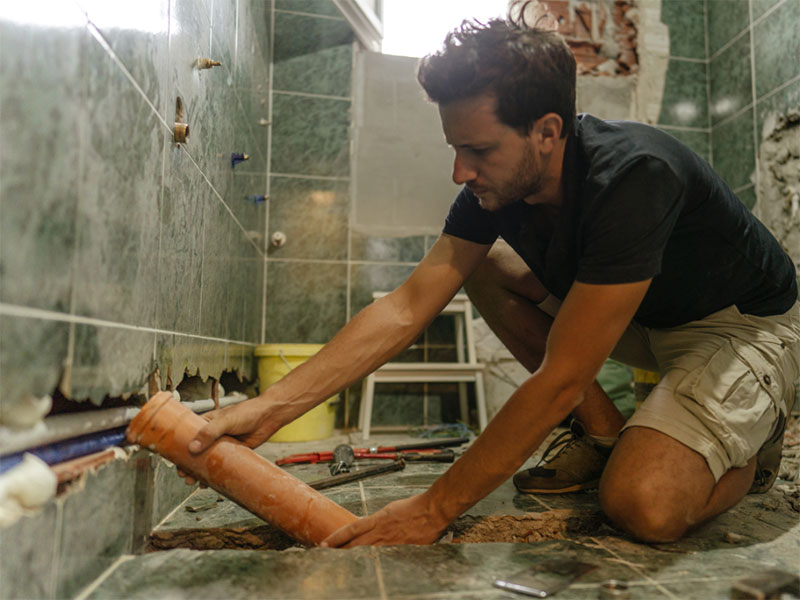Advertisement
Is it time you got around to fixing up your bathroom? The good news is that tiling is a trade skill that’s relatively easy to learn, and with a little practice, you can master it in no time at all. With the right approach and enough practice, you can son add bathroom tiling to your list of DIY skills. Given that it only takes a few hours to get to grips with the basics, the job could be done sooner than you think, saving you a small fortune on professional services.
With so many different types of bathroom tiles for sale and each material coming with its pros and cons and installation requirements, this handy skill can be tricky and costly if you don’t get it right. With minimal equipment needed and no assistance required, there’s no reason that you can’t hone your skills to create a bathroom that you are truly happy with. What’s more, when you do the work yourself, you will get even more satisfaction from the finished product.
Let’s take a look at some useful tips that will help you to get the best possible results for your DIY bathroom tiling efforts.
Start Off Right
When it comes to tiling, you quite literally need to start as you mean to go on. We recommend you start by measuring the bathroom. Knowing the space you’re working with, including any areas that you might need extra insight or advice like how to place tile around fixtures, edging techniques or re-doing a surround.
This information will help you narrow down your search parameters to find both the materials and educational content you need. Some of the best online tutorials and trade advice are on Youtube, whether you are looking for a how-to on laying bigger wall tiles or an easy route into universal bathroom tiling. Watching a demo on cutting tiles will also be a game changer if you need to create custom pieces or make a mistake.
Suppose you’re planning on getting a little creative with your tiling. In that case, it doesn’t necessarily require anything specialised, especially if you’re working with individual cut tiles of the correct size, ceramic, or porcelain tiles which are easier to work with; you’ll get into a rhythm pretty quick. But a little more precision and patience are needed for something like mosaics. Cutting and fitting will take longer, but assuming you have access to the right tools and quality products, things will come together in the end.
Here’s how to clean and prep your bathroom surfaces before you start the laying process. This step will vary based on the type of wall you are tiling. How to fix tiles should also be included in any of the tutorials you watch.
Design Specifics
Once you understand the basics and what materials you want to go with. It’s time to get specific. Now for people doing their whole bathroom, that could include accents and fixtures too. One example is choosing a laying pattern, there are plenty of options, but ultimately it’s about picking one that you can cut and/or lay seamlessly. Once you have decided on your pattern, it’s important to get familiar with movement joints and dry laying; both parts are included in most videos. Be sure to look for a video that features a step-by-step picture guide for common laying shapes so you can get a feel for them.
For those tiling a shower, there are countless design options to consider. Using the right tile to achieve a smooth finish on a shower bench or using small enough tiles on the diagonal are the best way to build shelves or cubicle-cubby. Doing splashback or sink counter tiling ensures your bathroom has a quality finish; you may wish to opt for a different style in these areas. While this can be done purely for aesthetics, it’s also a good choice for ease of maintenance in high-traffic spots.
Nitty Gritty
Before you get down to business, grouting the tiles, please make sure you have identified the differences between tile areas if you have multiple tile options in different parts of the room. This could affect the type of grout used. Don’t forget to pick up a notched trowel to make sure the adhesive is applied evenly to each tile so you can power through.
You should have been taught how to secure tiles by using a technique called backer boarding for when you’re tiling onto the cement. This aspect is crucial to the integrity of the tiles, especially the areas that will receive the most wear. Not doing this step could be a potential safety hazard, as are waterproofing problems, both of which could cause your bathroom to fail to meet Australian standards.
Execute The Finish And Enjoy Your Creation
While the finishes might seem like the easier step, don’t get complacent so close to the end. Executing the final touches is how you can distinguish quality and craftsmanship. From grout haze to sealants, it’s important you take the same careful approach to finishing the job as you did the whole way through the process. With the final touches, you can sit back, admire your handy work, and enjoy your newly designed bathroom space.

